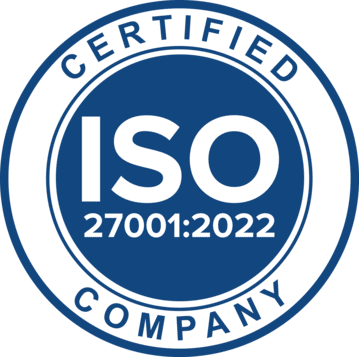Case Study II of IV– Benchmarking PatSeer’s Semantic search relevance
In this series of case-studies, we aim to demonstrate the effectiveness of PatSeer’s AI search against invention descriptions from different fields of science by undertaking a manual evaluation of patents claims of top 10 search results against the input paragraph.
In our previous case study we did a benchmarking on OLED (Organic Light Emitting Diodes) related patents. In this case study we take a topic from medical devices domain – Ingestible Sensors.
Ingestible sensors are non-invasive devices that can take the form of a capsule and can contain a wireless sensor for undertaking various diagnostic and monitoring functions. They have a wide range of applications in the field of healthcare.
To test PatSeer’s AI search, we wrote a sample invention description of an ingestible sensor that contained the following key elements:
Key elements:
1. Ingestible sensors
2. Bodily function check
- Heart rate,
- Blood pressure
3. Key Components
- Sensors,
- Data recorder,
- Software
4. Wireless transmission of data
5. Real-time monitoring
We ran the above paragraph, and the AI Semantic search evaluation was done for the first 10 records that showed up in the result set against the elements mentioned above.
The approach we used to do this benchmarking was the same that we used for the first case study about OLED technology which is to manually assess how well the claims of the top 10 record aligned with the key elements mentioned.
To explain this further, the table below showcases the detailed manual evaluation of the first record that showed up in the semantic search (US2017156632A1- INGESTIBLE DEVICES AND METHODS FOR PHYSIOLOGICAL STATUS MONITORING)
Key Elements | Claim Numbers matched | Reference from the claim | Overlap |
Ingestible sensors | 1-16, 25 | Ingestible device | Full overlap |
Bodily function check – Heart rate, blood pressure | 5, 12, 17, 19, 20, 22 | Heart rate | Full overlap |
Key Components | 1 | Acoustic sensor, processing unit | Full overlap |
Wireless transmission of data | 1 | Wireless device | Full overlap |
Real-time monitoring | 1, 17 | Monitoring system | Partial overlap |
The table lists all the elements mentioned in the paragraph, followed by the patent claim numbers in which the corresponding elements appeared. The next column shows the exact text from the patent claim that was matched against the key element. For e.g, ingestible sensors was matched with Ingestible device), the key components of an ingestible sensors usually include a sensor, data recorder and software which was matched with acoustic sensor and a data processing unit, and real time monitoring was matched with monitoring system. The fourth column indicates the extent of overlap between the paragraph and the claims of the patent document.
We can see that all the key elements mentioned in the paragraph were precisely covered in the claims of the first record identified through the AI Semantic search.
A similar analysis was done for the remaining set of records. We have consolidated all the results in a single table below.
We graded the records based on the overlaps, 1 point was assigned for full overlap, 0.5 was assigned for partial and 0 for no overlap. Based on the calculations done the final semantic performance score for the top 10 results in this case was 77%.
| Key Elements | ||||||
| Patent Number | Title of the patent | Ingestible sensors | Bodily function check | Key Components | Wireless transmission of data | Real time monitoring |
| US2017156632A1 | Ingestible devices and Methods for Physiological Status Monitoring | Full Overlap | Full Overlap | Full Overlap | Full Overlap | Partial Overlap |
| TW202000133A | An ingestible system to monitor gastrointestinal health in situ | Full Overlap | Partial Overlap | Partial Overlap | Full Overlap | Full Overlap |
| WO2022220317A1 | Ingestible health sensor for animal | Full Overlap | Partial Overlap | Full Overlap | Partial Overlap | Partial Overlap |
| US2017337330A1 | Systems, devices, and methods for ingestible event sensing and analysis | Full Overlap | No Overlap | Full Overlap | Full Overlap | Full Overlap |
| US2016198978A1 | Ingestible sensor, sensing method, and food | Full Overlap | Partial Overlap | Partial Overlap | Partial Overlap | Partial Overlap |
| US2008146871A1 | Ingestible low power sensor device and system for communicating with same | Full Overlap | Partial Overlap | Full Overlap | Full Overlap | Full Overlap |
| US2013261410A1 | System and method for body and in-vivo device, motion and orientation sensing and analysis | Full Overlap | No Overlap | Full Overlap | Full Overlap | Partial Overlap |
| US2002132226A1 | Ingestible electronic capsule | Full Overlap | Partial Overlap | Full Overlap | Partial Overlap | Partial Overlap |
| US2004054278A1 | Ingestible pill | Full Overlap | No Overlap | Full Overlap | Partial Overlap | No Overlap |
| US2014162305A1 | Patient in vivo gut diagnostic and treatment tool | Full Overlap | Partial Overlap | Full Overlap | Full Overlap | Partial Overlap |
You can refine original search results based on records that you identify as highly relevant and these additional steps help improve result quality further but, in the above study we benchmarked the results without any such refinements.
To sum up, it’s important to make a detailed assessment of semantic search performance by using your own invention descriptions. In our approach we have benchmarked the invention description against claims of patents. We will follow soon with additional case studies from other domains.




